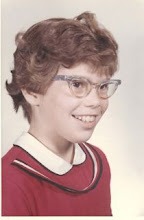She will make you find your car keys and drive to the town of Blaine where you will search for a roll of paper. You will buy that roll of paper and some Sharpies (double-tipped!). Then, without even letting you stop to buy some M&M's for comfort, she makes you drive back to the house. The paper is first unrolled on the floor but our backs and hips are too old for this to work for long. So upstairs, in my loft/office, we hang the paper. (There is a terrific 3M product that allows you to hang posters without damaging newly painted -- or even oldly painted --walls.)

Here I am, writing away. Here is what went on this paper (after much blood, sweat -- Mary's -- and tears -- mine):
First, I wrote down the major plot lines of the story. Mary kept asking questions until we figured out what the turning points of Acts 1 and 2 were (I'm still not sure I know what a turning point is, but Mary does!) and I wrote out everything that needed to happen in the story to get from the opening moment to the denouement.
This took the better part of 2 days. I have never, ever written a book this way. Ever!
However, since arriving back home, I am burning up the keyboard. I've jettisoned thousands of those words racked up when I was bragging about my word count to Sarah Miller (that is where pride gets you). But -- for now at least -- I feel I am finally writing with focus. I know that something I didn't reveal until about chapter 4 needs to be tapped on in the first chapter. I know why two of my main characters seem to dislike one another. And -- finally, finally, finally!-- I know how a particular but extremely important object in the story is tied to the resolution of both the A-plot and the B-plot.
My initial reaction to "hitting the wall" was about the same as my initial reaction to Darcy Pattison's suggestion to print off my manuscript in 8-point font for a revision workshop I took with her. Since kids might read this blog, I can't print my reaction.
If you don't have a big wall, just write on blank sheets of computer paper and string them together down a long hall or in a room you rarely use, like the dining room.
Don't tell Mary: but this was a really good idea.
It would've been even better with M&Ms.


So, where does Mary live (so I can price outgoing flights) and what does she like to eat?
ReplyDeleteB Plot?! You have a B Plot!?
ReplyDeleteThis is fascinating! I need a Mary.
We all need a Mary!
ReplyDeleteBarbara, you silly goose, you always have B-Plots: In How to Steal a Dog, the A-Plot is Georgina stealing Willy and the B-Plot is her emotional journey, turning her wrong into a right.
Every novel has an A and a B plot -- you may just not think about it that way.
This is great, Kirby. I'm so glad it worked for you. My friend, Martha Alderson, does this with her work & when she teaches plot workshops and consults (www.blockbusterplots.com).
ReplyDeleteSo far, it hasn't worked. I seem too non-visual, or too linear, or something. Maybe I just need Mary to come by my house for a weekend!
Becky, I'm both non-visual and linear but I think this does work if you stick with it long enough. Really, I wrestled with it for nearly 2 full days. It took that long to think through all the connections.
ReplyDeleteOn the flip side, I generally don't work this way. And I just listened to an interview with Wally Lamb and he never plots anything. So it just goes to show there is never only one way to write that book!
Kirby, I'm not supposed to be blog reading and am supposed to be looking for jobs and updating my resume. Well, I have been good, but I can't resist peeking at your blog now and then and THIS IS AWESOME.
ReplyDeletePlease bring Mary back. We all need a wall of paper and a good buddy.
Going big, going little -- they are both just ways of seeing the story in a new way. Lately, I've been using YWriter (http://www.spacejock.com/yWriter5.html) because it makes you fill in so many blanks that eventually you start to make connections.
ReplyDeleteHappy Writing!
Darcy
I'm a big believer in plotting, after spending nearly four years writing the organic way and realizing my plot was everywhere except where it should be.
ReplyDeleteThis is a fantastic visual approach. I can see how it would take a couple of days to iron out all the subplots. Well done. I'm going to give this a try!
What I do is, when I am stuck, I type out a list of all the plot points from that point until the end of the novel. If something's missing I skip a space. Then print and number the plot points and fill in with subnumbers for what comes in-between.
ReplyDeleteIt's the same idea as above, just brainstorming in a new way.
Whatever gets the book written, eh?
Ruth! We're both Bloomsbury authors -- too cool. I love this idea of yours. Stealing it for WIP.
ReplyDeleteYep, whatever it takes. Including bribing self with lattes, chocolates and new shoes.